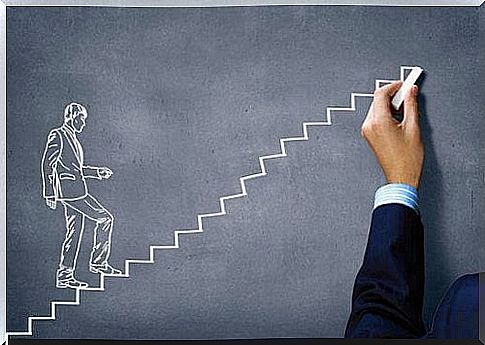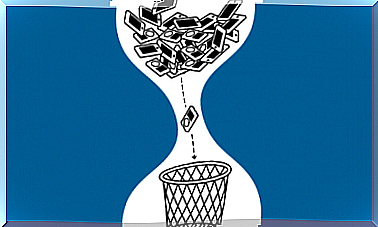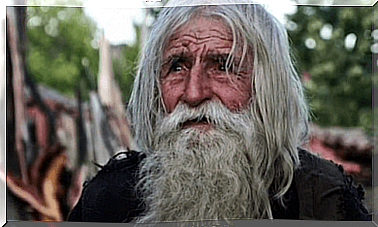Motivational Interviewing: Helping People Change

Few methods have seen such dramatic progress in such a short time as motivational interviewing. Its success is due to several factors: it facilitates the relationship with the patient, its effectiveness is scientifically evaluated and it has been developed collaboratively. Currently, motivational interviewing applies to a wide variety of contexts, and depending on these, motivational interviewing receptors can be clients, patients, students, drug addicts, delinquents, or interns.
Likewise, those who practice motivational interviewing can be mentors, educators, therapists, coaches, psychologists, doctors or nurses. This is what makes this practice such a powerful tool.
What is motivational interviewing?
To put it pretty quickly, we can understand motivational interviewing as a tool for people to change what they don’t like about themselves. This causes them great dissonance and, consequently, frustration. This is achieved through conversation with the interviewee. Thanks to this tool, we manage to break down the barriers that prevent or make it difficult for people to change.

It is true that we talk about change every day, and in a natural way. We ask things of others and we are very sensitive to aspects of everyday language which denote reluctance, good disposition, commitment… In fact, apart from imparting information, one of the most important functions of language is to motivate and have an influence on the behavior of the other. It could be something very simple like asking someone to pass us the salt or very complex like negotiating an international treaty.
There are also conversations about the change that take place in the form of a consultation with a professional. Through these, one person tries to help another change. Doctors, dentists, nurses, dieticians and nutritionists also maintain conversations about behavior and lifestyle change.
Motivational interviewing pays attention to natural language that refers to change. Its goal is to generate more effective conversations on this topic. This is especially sought after when these take place in a context where someone is offering professional help to another person.
Many of these conversations take place in an unnecessary or dysfunctional manner, and regardless of the good intentions of the interviewer. Thus, motivational interviewing was created to find a constructive way to overcome the challenges that arise when someone seeks to motivate another person to change.
More concretely, motivational interviewing consists of organizing conversations. In this way, people can persuade themselves to change, based on their own values and interests.

Communication styles
We can think of help conversations as if they were at the end of a line or segment. At one end we find the directive style. In contrast, we find the accompaniment style. The focus of this line is ruled by the guiding style, which is what the motivational interviewing model follows. To better get into this situation, imagine a trip to a foreign country in which you hire a guide to help you.
The guide’s job is not to tell you when to arrive, where to arrive, or what to do or see. A skillful guide knows how to listen and offer useful information when needed, depending on your interests. Motivational interviewing is located in this intermediate territory, between leading and supporting; it even includes elements of both. Guiding is a task during which it is very often necessary to accompany; other times it is to lead; sometimes, you don’t even have to do anything and leave some freedom to the person, opening the range of possibilities that the latter is able to perceive and interposing these three attitudes intelligently.
For example, stimulating a child’s learning, in the majority of cases, involves taking on the role of guides. We must intersperse periods of accompaniment or supervision with moments of leadership and others of freedom.
Avoiding the correction reflex is fundamental in motivational interviewing
People come to work in a profession that allows them to help others for different reasons. It could be because they want to do something for society, prevent and slow down suffering, show their love for God, etc. Ironically, these same motives can lead to overuse of directive style when offering this help. Warning! The directive style can become ineffective or counterproductive when we want to help people.
When we use the directive style, we also use the correction reflex. We want to help someone so much that we often impose our ideas about what to do and what not to do. However, this unfortunately creates resistance. One of the goals of motivational interviewing is precisely to try to minimize them.
What is not motivational interviewing?
It may be useful to clarify what motivational interviewing does not cover and to differentiate it from other interview methods. Motivational interviewing isn’t just about being kind to others. It also doesn’t look like Carl Rogers’ client-centered therapy. During motivational interviewing, we find an intentional and strategic movement towards one or more specific objectives.
Motivational interviewing is not a “technique” either, an easy-to-learn trick that we can easily add to our toolkit. Rather, it is a way of being with others, an integration of concrete clinical skills that promotes motivation for change.

It’s a complex style that can be perfected over time. Nor is it the panacea or the solution to all clinical problems. Motivational interviewing has mainly developed to help people resolve ambivalence in the face of change and strengthen their motivation.
During the motivational interviewing process, five communication skills are used. They are: formulating open questions, affirming, reflecting, summarizing and providing information and advice, always respecting the client.
As we have seen, motivational interviewing is a powerful tool that facilitates change in people. It reduces ambivalence towards the latter and increases the ability to motivate. All this is possible thanks to a communicative style of guide, without imposing anything and leaving the client to decide.
Bibliographic reference
Miller, WR, Rollnick, S. (2008). Motivational interviewing in the treatment of psychological problems . New York: Guildford Press.










